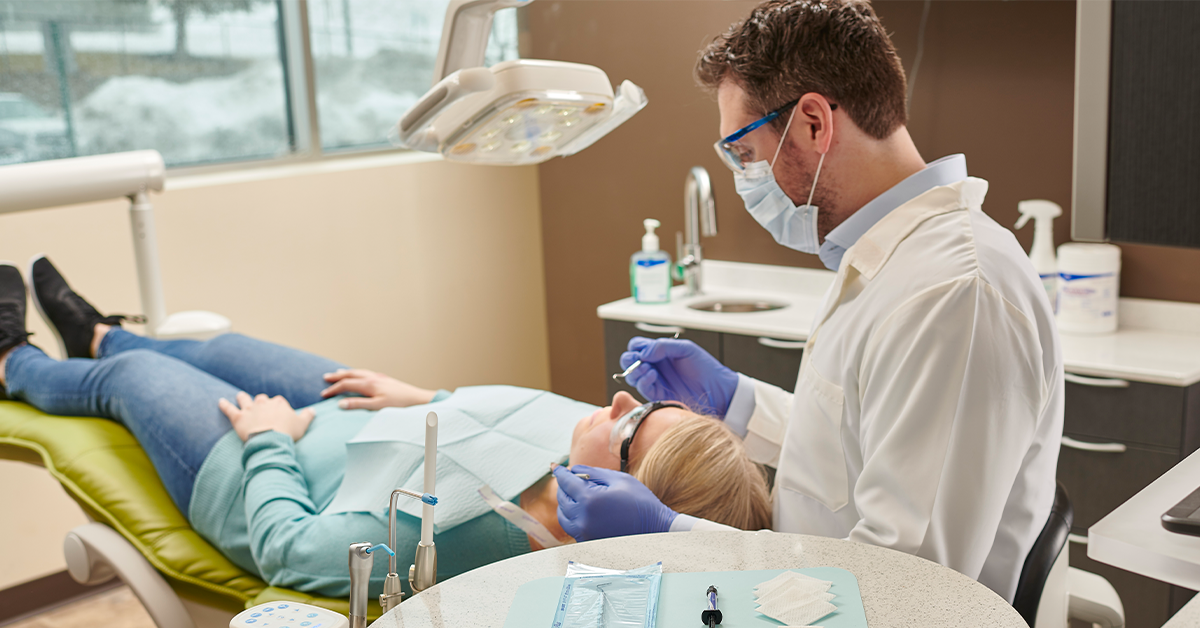All healthcare, including dental care, requires individualized prevention and treatment strategies. A one-size-fits-all approach won’t address the unique health condition each patient presents with when they walk into your practice. Instead, careful risk assessment can help you and your team design a specific plan of care ideal for individual patients.
Caries treatment evolution
The approach to dental caries has shifted over time from extractive to restorative and now to preventive. We now know that, when detected early, the disease process can be treated and reversed without any type of surgical treatment. This minimally invasive approach includes early caries lesion detection, patient risk assessment and intervention that eliminates or delays the need for restorative treatment.
In 2016, the FDI World Dental Federation published the Advocacy Toolkit to help national dental associations establish policies for preventing and managing dental caries. Within that toolkit, the FDI outlines three levels of prevention – primary, secondary and tertiary – that consider not just the role age and genetics play in caries risk but also include social, economic and environmental factors. Lifestyle choices – diet as well as tobacco and alcohol use – also impact caries risk. These factors build over time and affect all age groups. With that in mind, a life-long course of prevention and management is vital to successful outcomes. Action steps are a shared responsibility that require effort by individual patients, dental professionals and the community.
Primary prevention
Ideally, primary prevention should begin at a young age to help establish good oral hygiene habits and to make in-office dental care routine. The goal, of course, is to prevent caries from ever occurring. Primary prevention relies on controlling exposure to the causes of caries infection, including modifying unhealthy behavior and increasing disease resistance.
The Advocacy Toolkit recommends these steps for individual patients:
• Adequate oral hygiene
• Fluoride toothpaste
• Limited sugar consumption
• Regular preventive appointments
The dental professional’s role includes:
• Patient education
• Plaque control
• Diet counseling
• Topical fluoride and sealant applications
The community role in primary prevention includes:
• Oral health education programs
• Community water fluoridation
• Oral healthcare in schools
Secondary prevention
The goal of secondary prevention is to identify caries in its early stages and then take prompt steps to stop, slow or reverse the disease process. Management includes reinforcing personal oral hygiene strategies recommended as part of primary prevention (at-home oral hygiene, fluoride toothpaste use, reduced sugar consumption and dental checkups as recommended by the patient’s dentist) to prevent caries recurrence. In addition, oral health professionals should perform examinations geared toward early detection of caries and continue to apply pit and fissure sealants and topical fluorides as appropriate.
The community’s role at this level of prevention includes periodic screenings, sealant programs and fluoride varnish applications in schools.
Tertiary prevention
This third level of preventive care is performed in the later stages of caries with the goal of reducing disease impact so that patients can improve or maintain their oral function and quality of life while also preventing new lesions. The FDI Advocacy Toolkit recommends that patients seek preventive oral health services to aid in this effort. The community has a role to play here by providing these preventive services. Dental professionals are advised to provide prompt treatment of progressing lesions, perform minimally invasive treatment as appropriate and maintain preventive steps.
Preventive armamentarium
In addition to the materials and instruments crucial to providing preventive care, your armamentarium also should include education and advocacy. Take every opportunity available during a dental visit to provide education that will help patients achieve the best oral health possible. Start by asking how best a patient likes to receive education. Do they prefer receiving handouts, or do they learn best by demonstration and teach-back? Some patients would rather have information presented in a video format or offered through an app. You can provide the best patient education possible, but if it’s not presented in a way that engages the patient and ensures retention, your efforts will be in vain.
Advocacy is another tool at your disposal to aid preventive care. Join national, state and local dental associations and get involved in community education programs. Recognize and promote national and global oral healthcare initiatives such as National Brush Day and World Oral Health Day. Participate on committees dedicated to policymaking so you can have an impact on how oral healthcare is provided locally and across the country.
Of course, materials and instruments are critical to ensuring you can provide the best chairside preventive care. Speak with your Patterson representative for products you might want to consider integrating into your preventive care armamentarium.
Selected references
FDI World Dental Federation. Advocacy Toolkit. 2016.
Healthy People 2030. Social Determinants of Health.
Mansur EKM. Primary prevention of dental caries: An overview. Int J Clin Prev Dent. 2020;16(4):143-148.
– – –
A version of this article originally appeared in the March edition of OnTarget. Read the latest edition and view current promotions at pattersondental.com/dental/ontarget.





You must be logged in to post a comment.